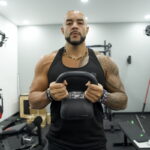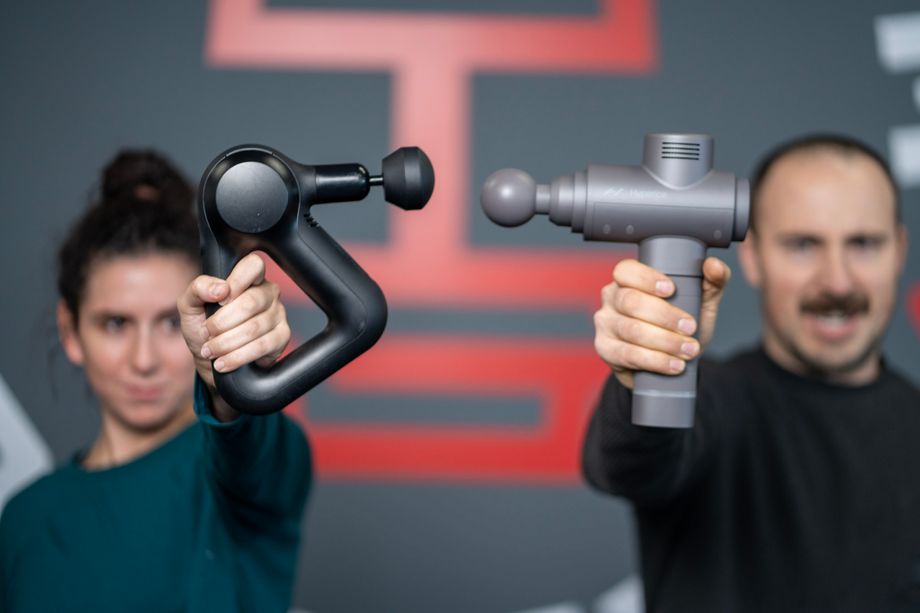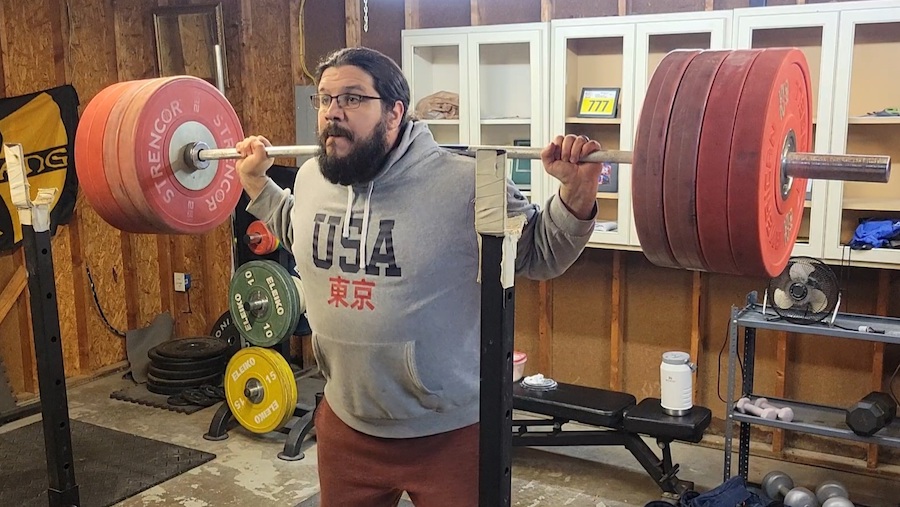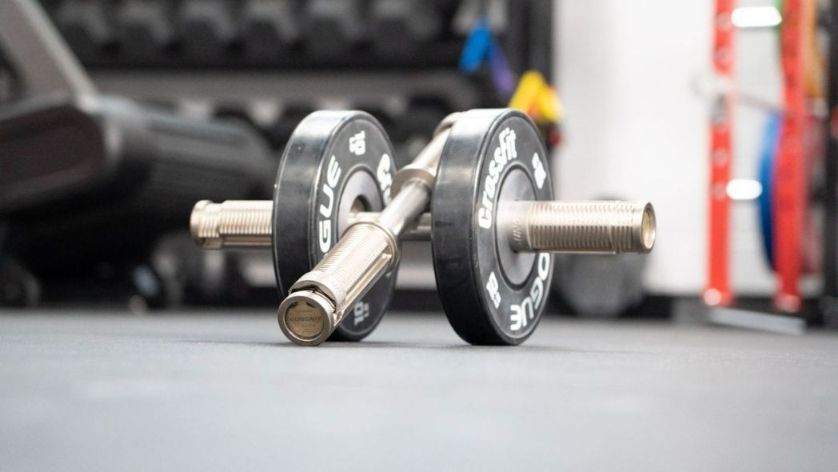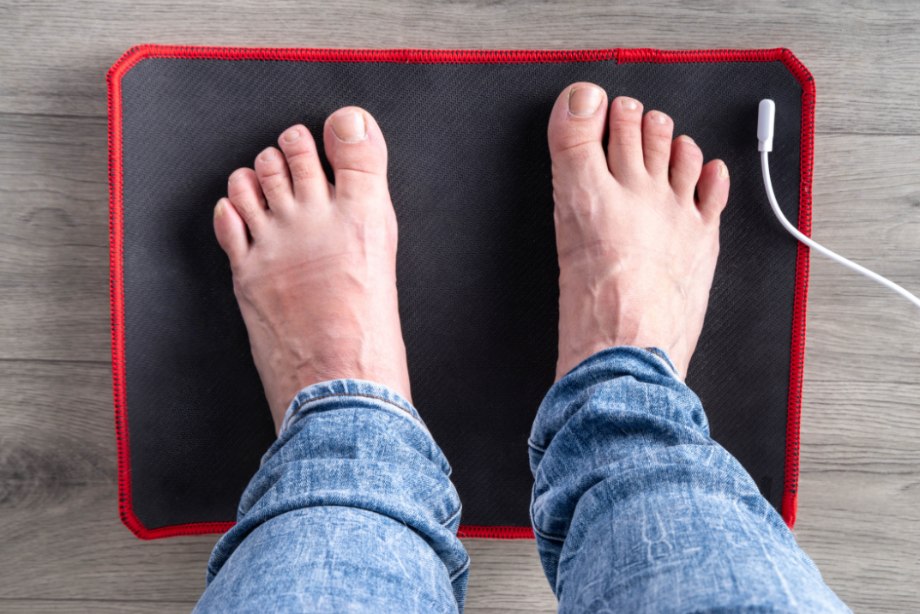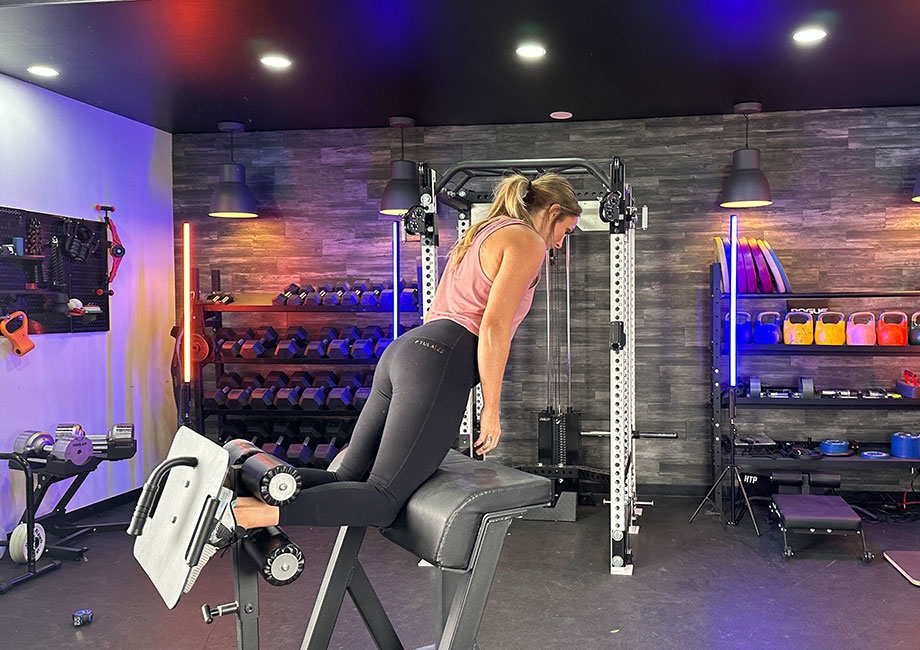If you use it right, a massage gun is the next best thing to a massage therapist
Made popular by fan-favorite brands like Hypervolt and Theragun, massage guns have joined the ranks of foam rollers as a must-have workout recovery tool.
A massage gun is a handheld device that puts the power of massage treatment in your palm. Resembling a small power drill, these devices utilize vibration or percussion technology (more on that later) to help relieve muscle pain and soreness and aid in post-workout muscle recovery.
Here, we’ll break down exactly how to use a massage gun, plus give you a primer on how they actually work. We’ll also touch on the most common mistakes when using a massage gun—they’re often used incorrectly—and how you can avoid making them.
RELATED: Best Massage Guns
How Do Massage Guns Work?
Massage guns utilize two different types of massage therapy: percussion massage and vibration massage. While there are slight nuances between the two types, the overarching concept is the same.
“[Massage guns] work by creating a vibration that travels through the muscle tissue,” says Steve Hruby, doctor of chiropractic and founder at Kaizen Progressive Wellness, a chiropractic care facility in Scottsdale, Arizona. “This vibration helps to break up scar tissue and knots, which can help improve flexibility and range of motion. It can also help reduce inflammation and pain.”
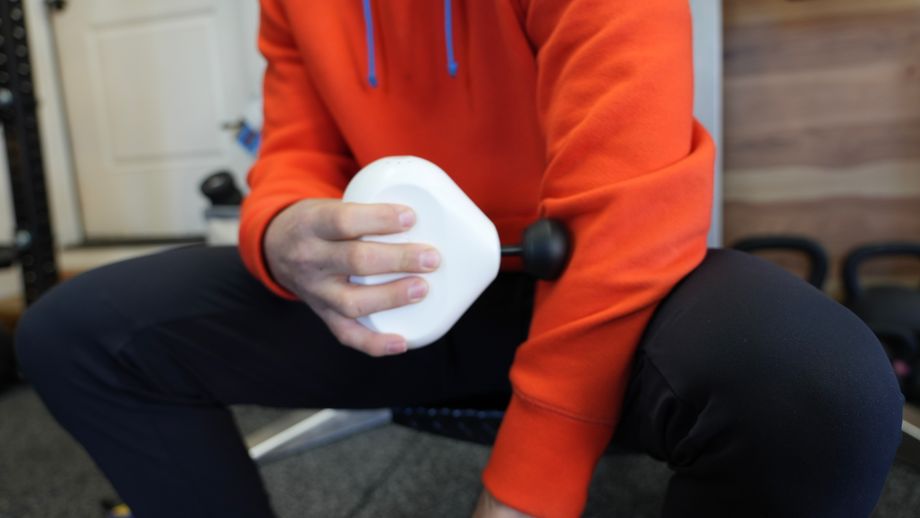
While the current body of scientific literature on massage guns is not comprehensive nor conclusive, enough studies exist to identify the basic mechanisms by which percussive massage guns work.
Percussive therapy is a type of myofascial release, the same mechanism that inspired the mid-2010s foam rolling craze. Myofascial release is a type of soft tissue therapy that aims to release adhesions in targeted muscles, as well as improve blood flow.
Interestingly, Therabody, a top name in the percussive therapy space, claims its massage guns work primarily by blocking your muscles’ pain signals to the brain (more on this later). At the same time, the massage increases blood flow to the treatment site, aiding in muscle recovery.
RELATED: Read Our In-Depth Theragun Review
Percussion Massage Guns vs. Vibration Massage Guns
According to Hruby, percussion massage guns use a rapid up-and-down motion, similar to a jackhammer, which can be more effective at breaking up scar tissue and knots than vibration. Vibration massage guns use a back-and-forth motion, which may be more helpful for increasing blood flow, Hruby explains.
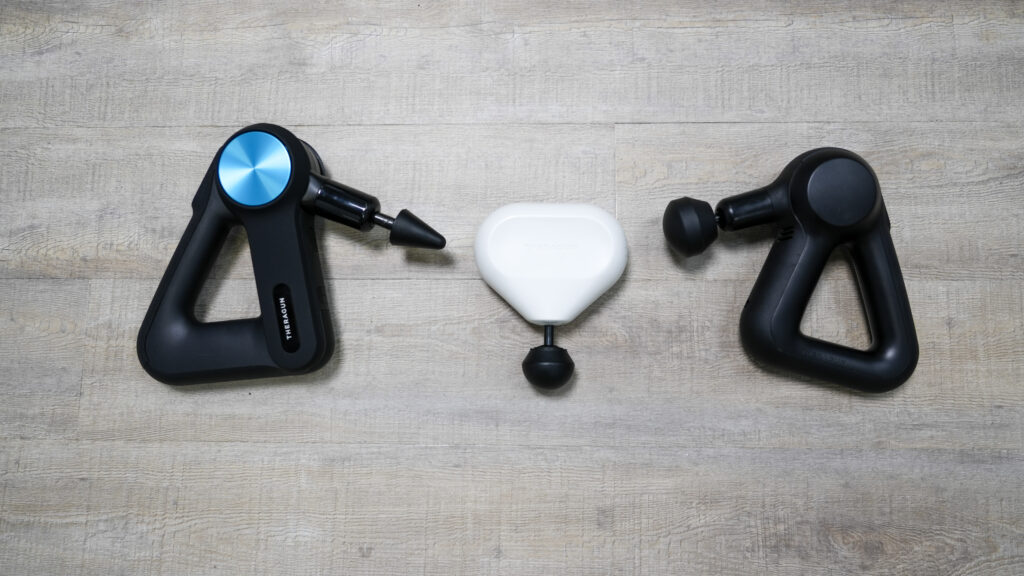
Percussive massage guns have a higher amplitude than vibration massage guns, which means they reach deeper into muscle fibers. There’s no clear consensus on what depth a massage gun must reach to be considered a percussive device, but generally, 14 to 16 millimeters is considered a strong percussive amplitude.
Most manufacturers will specify which type of therapy their massage guns use, but Hruby says there are a few other ways you can tell, too. (This is important because some manufacturers—even big names, like Hyperice—don’t disclose information such as the tissue depth their products reach.)
In general, prospective buyers can tell percussion massage guns from vibration massage guns in two ways: Percussion devices are typically more expensive than vibration massage guns and often are larger and heavier.
RELATED: Best Budget Massage Guns
How To Use a Massage Gun
Whether you’re using percussion or vibration, the most effective way to use a massage gun depends on what you’re using it for. How you approach muscle recovery and how you use a massage gun for chronic pain relief will differ. That being said, here’s a general step-by-step of best practices:
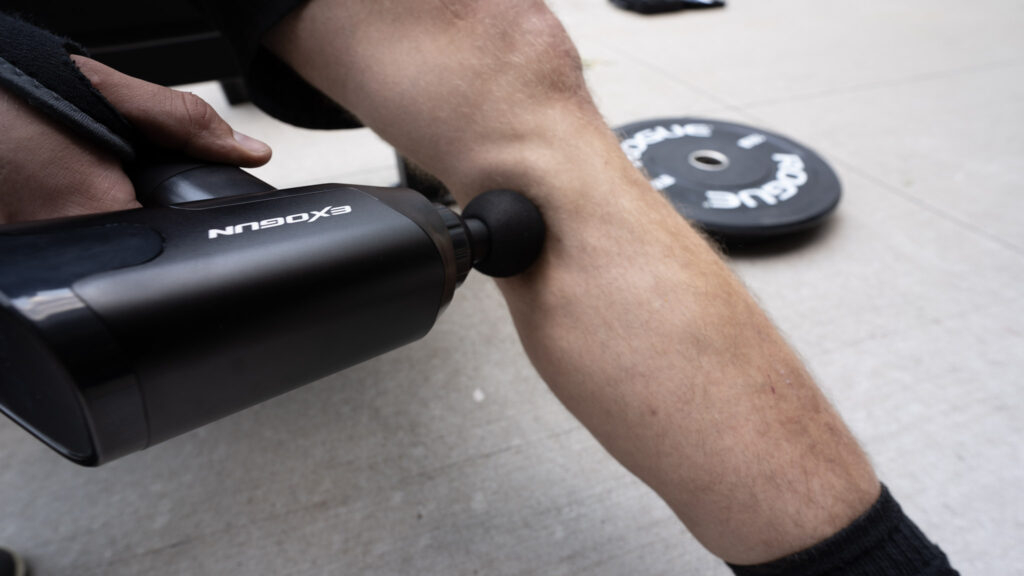
- Read the manual.
- Charge the device.
- Unplug the device and connect the attachment you want to use.
- Turn the massage gun on to the lowest speed before bringing it to your body.
- Apply it to the area of your body you want to target without adding pressure.
- Slowly move the massage gun along the muscle.
- If you feel a knot or adhesion, focus the massage on that area for 30 seconds before continuing to another area.
- Repeat as needed.
How To Use a Massage Gun for Muscle Recovery
Massage therapy and myofascial release therapy—a manual technique that focuses on releasing fascial adhesions or “trigger points”—are widely used in muscle recovery. In fact, they’re so effective that there’s a whole subcategory of massage (sports massage, anyone?) dedicated to just that.
Massage guns mimic the techniques used in these recovery services, but give you the option to reap the benefits more frequently, and to control the pressure. And science backs their use for this purpose.
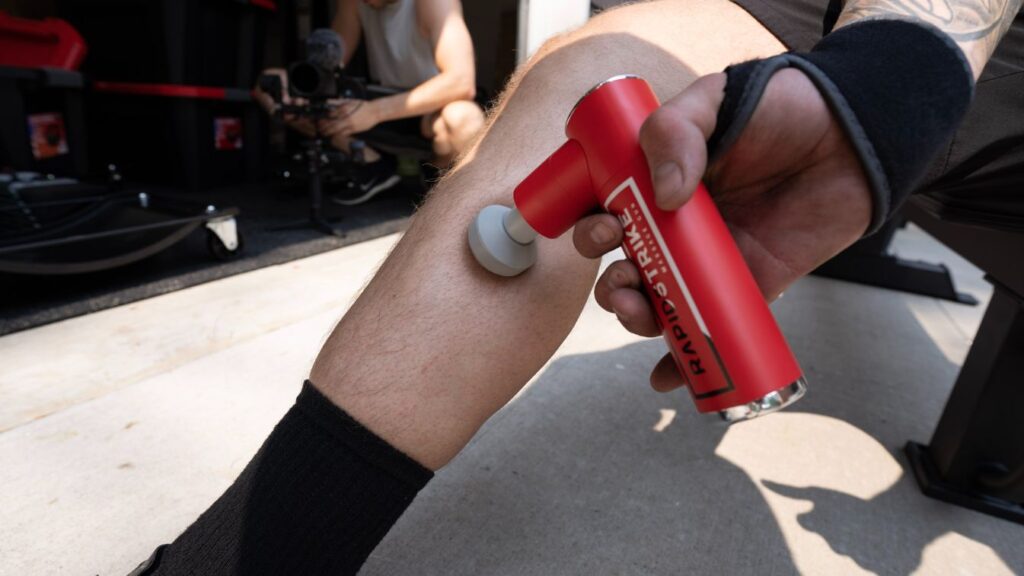
Researchers from one study that was published in the Journal of Clinical and Diagnostic Research1 divided participants into three groups. Prior to exercise, one group received 15 minutes of massage therapy, one group received five minutes of vibration therapy, and the control group received no intervention. Muscle soreness was reported 24 hours, 48 hours (two days), and 72 hours (three days) after exercise.
The massage therapy and vibration therapy groups both experienced significant improvements in range of motion 48 and 72 hours after exercise. The vibration therapy group also had lower levels of lactate dehydrogenase, also called lactic acid dehydrogenase or LDH, and creatine kinase (CK).
These two enzymes contribute to delayed onset muscle soreness (DOMS)2, which is delayed muscle soreness following a workout, 48 hours after exercise. The study subjects also reported feeling less sore during each of the three check-ins.
The best way to reap the benefits of a massage gun is to think of it as a regular part of your workout routine. It will offer the most profound benefits if you use it consistently before and after your workouts.
Before Workouts
A massage gun doesn’t take the place of a regular warm-up (stretching and some low-intensity cardio), but it can be a powerful pre-workout tool.
“Prior to exercise, [massage guns] assist in increasing range of motion, particularly when included as part of a warm-up,” says body performance and injury expert Rami Hashish, PhD, DPT. They can also increase blood flow to your muscles, which can help reduce post-workout muscle soreness and decrease your chances of injury during a tough workout.
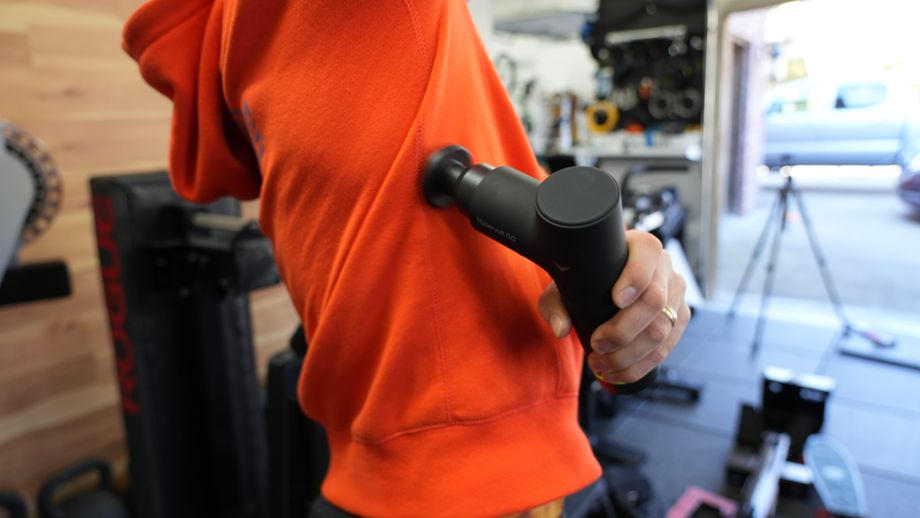
Before workouts, apply a massage gun to each muscle group for two minutes. You can also use it in between sets to keep your muscles from tightening up.
After Workouts
Post workout, a massage gun can help your body cool down and prevent your fatigued muscles from tightening up. “Following exercise, massage guns help to limit perceived muscle soreness with minimal to no effect on muscle performance (e.g. strength),” says Dr. Hashish.
Percussion and vibration massage also activate your parasympathetic nervous system3, the branch that tells your body it’s time to calm down. This reduces stress and inflammation, a major factor in delayed onset muscle soreness (DOMS)—the soreness you typically feel two to three days after a workout.
How To Use a Massage Gun for Mobility
Tight muscles can decrease mobility, or your ability to move your muscles and joints freely. Massage guns work to relieve muscle tension and break up fascial adhesions, which can constrict the muscles. They also help improve blood circulation.
In one small study published in the Journal of Sports Science and Medicine4 in 2020, 16 healthy males were tested on two separate days. One day they were given five minutes of percussive therapy with a massage gun on their calf muscles. They received no treatment on the second day. After the treatment, range of motion in the plantar flexor muscles (the muscles of the ankle, foot, and leg) increased by 5.4 degrees.
Vibration therapy5 has also shown promise for improving mobility and balance in elderly adults, although it’s worth noting that many studies used whole-body vibration machines in conjunction with targeted vibration therapy.
If you’re using a massage gun for mobility, Hruby recommends targeting each muscle group on your body for two to three minutes.
How To Use a Massage Gun for Pain Relief
Outside of sore muscles, there’s not a ton of research on using a massage gun for general pain relief, but there are a couple promising studies.
Muscle Pain and Soreness
If possible, it’s best to use a massage gun before you develop any muscle soreness, but it can provide some relief after the fact, too.
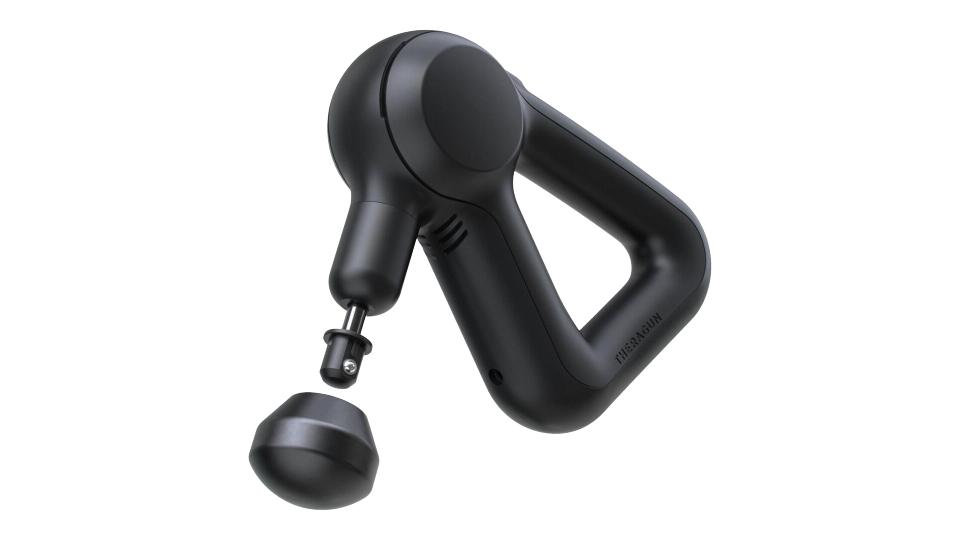
When using a massage gun for muscle soreness, start with the lowest setting and work your way up based on your pain level. The area may feel tender, but it shouldn’t hurt. If it does, ease up. Hruby recommends using the massage gun on the affected area(s) for five to seven minutes.
Nerve Pain
There’s not a ton of research on using a massage gun for nerve pain relief, but one small case study6 found that vibration therapy, as a whole, improved peripheral neuropathy (widespread nerve pain) in a diabetic male.
Percussive massage may also help alleviate symptoms of sciatica. Sciatica develops when the sciatic nerve becomes compressed and inflamed, usually due to tight connective tissues or a herniated disc. A massage gun can help loosen up the tissues and release adhesions, freeing up the sciatic nerve.
For nerve pain, Hruby recommends using the massage gun on the affected area(s) for two to three minutes. If you have nerve pain, consult your doctor before using a massage gun.
RELATED: Massage Gun For Sciatica
Chronic Pain
In one observational study7, people with fibromyalgia—a condition that causes widespread pain all over the body—were given a deep, oscillation massage (similar to a deep tissue massage) two times per week for five weeks. After the study period, the participants reported improvements in symptoms and quality of life.
For chronic pain relief, Hruby recommends a 10- to 15-minute full-body session two to three times per week, but as always, consult your healthcare provider first.
How Often to Use a Massage Gun
As long as you’re careful and paying attention to feedback from your body, you can safely use a massage gun every day, but Hruby says he typically recommends two to three times per week, just to play it safe.
Pay attention to the amount of time in each session, too. “While two minutes of massage gun application has been shown effective in certain muscle groups, in others, 30 seconds may be sufficient,” says Dr. Hashish. “Ideal application time can be contingent upon a variety of factors, including age, physical fitness level, and underlying health conditions.”
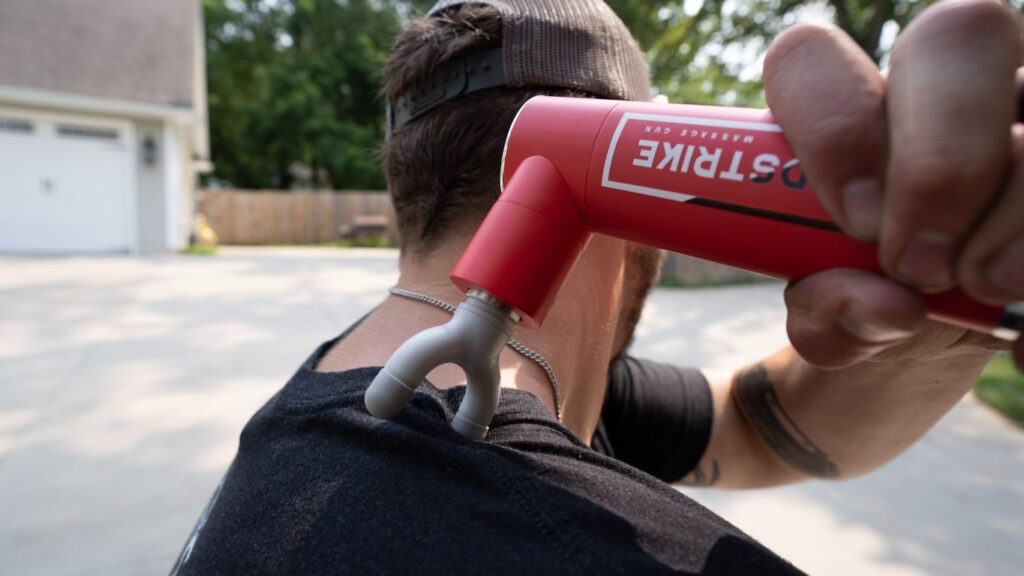
As such, you should always discuss any new massage tools and your ideal application time with your healthcare provider.
RELATED: Foam Roller vs Massage Gun
How Not to Use a Massage Gun
Massage guns are powerful recovery tools, but if used incorrectly, they can make the problem worse. One mistake people often make is using the massage gun too long on one body part, which can cause pain and discomfort, according to Hruby. “It’s important to be aware of your body’s limitations and to not use the massage gun on injured or inflamed areas,” he says.
Be aware of where you’re applying pressure, too.
“When applying the massage gun, it’s important to apply it to the muscle and not any bony structures,” says Dr. Hashish. “As a caution, it’s recommended to use lower power settings when applying to muscle groups with relatively superficial bone (e.g. the upper chest).”
You can use it on your lower back, but avoid applying it directly to your spine or other bony areas of the body. Also avoid going directly over sprains, strains, scabs, open wounds, or bruises.
Benefits of Massage Guns
Massage guns have become a go-to gadget for fitness enthusiasts looking to get rid of knots and alleviate soreness. One of the best muscle recovery tools to keep in your gym bag, they can help you feel refreshed and ready to crush another gym session.
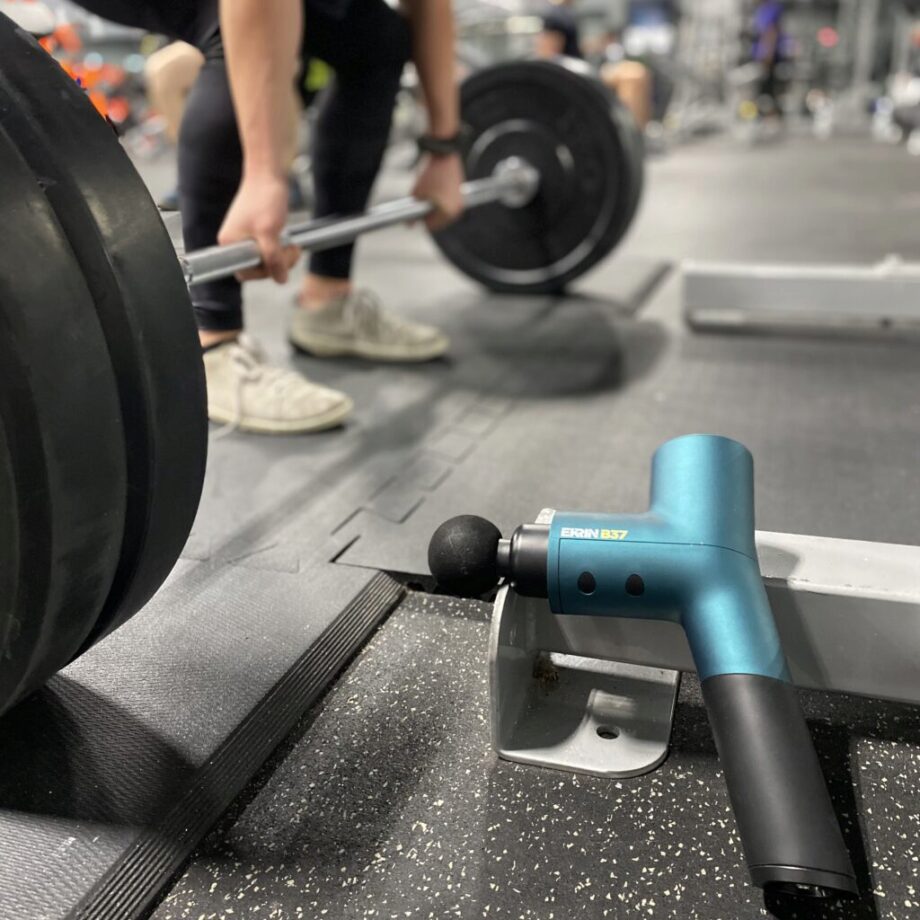
From breaking up scar tissue to reducing inflammation, a massage gun can provide many potential benefits, including:
- Relieving muscle soreness
- Enhancing blood circulation
- Reducing lactic acid build-up
- Increasing range of motion and mobility
- Decreasing delayed onset muscle soreness (DOMS)
Furthermore, this valuable tool checks the boxes for convenience and portability, as you can get a quick, effective massage experience from any location. The best mini massage guns easily fit in a backpack or gym, making them ideal for traveling or taking care of your recovery on the go.
RELATED: Do Massage Guns Really Work?
How To Use a Massage Gun: FAQs
Are massage guns safe to use?
While massage guns can be an effective tool for pain, soreness, and muscle recovery, it’s always best to consult your doctor or physical therapist for tips on proper technique and application times, especially if you have limited sensation, arthritis, fibromyalgia, osteoporosis, and/or any other chronic conditions.
Where should you not use a massage gun?
Don’t use a massage gun on any injuries, including bruises, scrapes, and cuts. Avoid using a massage gun on bony protrusions, too.
How long should you use a massage gun?
How long you use your massage gun is largely up to personal preference, but in general, it’s recommended to use a percussive therapy device for 30 seconds to two minutes on a given muscle or muscle group.
How often should you use a massage gun?
As a certified personal trainer (CPT), staff writer Stephen Sheehan recommends using a massage gun regularly as part of your recovery routine to target sore muscles or tight areas. However, keep your sessions shorter to prevent any irritation if you plan to use it daily.
References
- Imtiyaz S, Veqar Z, Shareef MY. To Compare the Effect of Vibration Therapy and Massage in Prevention of Delayed Onset Muscle Soreness (DOMS). J Clin Diagn Res. 2014 Jan;8(1):133-6. doi: 10.7860/JCDR/2014/7294.3971. Epub 2014 Jan 12. PMID: 24596744; PMCID: PMC3939523.
- Hotfiel T, Freiwald J, Hoppe MW, Lutter C, Forst R, Grim C, Bloch W, Hüttel M, Heiss R. Advances in Delayed-Onset Muscle Soreness (DOMS): Part I: Pathogenesis and Diagnostics. Sportverletz Sportschaden. 2018 Dec;32(4):243-250. English. doi: 10.1055/a-0753-1884. Epub 2018 Dec 11. PMID: 30537791.
- Seifert, G., Kanitz, J.L., Rihs, C., Krause, I., Witt, K., Voss, A. Rhythmical massage improves autonomic nervous system function: a single-blind randomised controlled trial. Journal of Integrative Medicine, Volume 16, Issue 3, 2018, Pages 172-177, ISSN 2095-4964, https://doi.org/10.1016/j.joim.2018.03.002.
- Konrad A, Glashüttner C, Reiner MM, Bernsteiner D, Tilp M. The Acute Effects of a Percussive Massage Treatment with a Hypervolt Device on Plantar Flexor Muscles’ Range of Motion and Performance. J Sports Sci Med. 2020 Nov 19;19(4):690-694. PMID: 33239942; PMCID: PMC7675623.
- Cerciello S, Rossi S, Visonà E, Corona K, Oliva F. Clinical applications of vibration therapy in orthopaedic practice. Muscles Ligaments Tendons J. 2016 May 19;6(1):147-56. doi: 10.11138/mltj/2016.6.1.147. PMID: 27331044; PMCID: PMC4915454.
- Hong, J., Barnes, M. J., Kessler, N. J. Case study: Use of vibration therapy in the treatment of diabetic peripheral small fiber neuropathy. International Journal of Diabetes Mellitus, Volume 3, Issue 1, 2015, Pages 72-75, ISSN 1877-5934, https://doi.org/10.1016/j.ijdm.2011.01.010.
- Kraft K, Kanter S, Janik H. Safety and effectiveness of vibration massage by deep oscillations: a prospective observational study. Evid Based Complement Alternat Med. 2013;2013:679248. doi: 10.1155/2013/679248. Epub 2013 Oct 3. PMID: 24222779; PMCID: PMC3814103.



